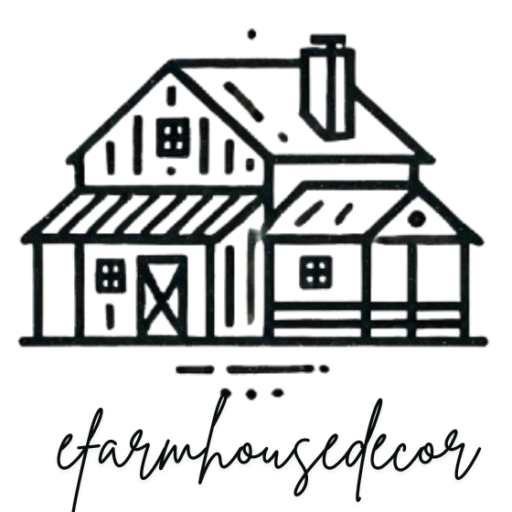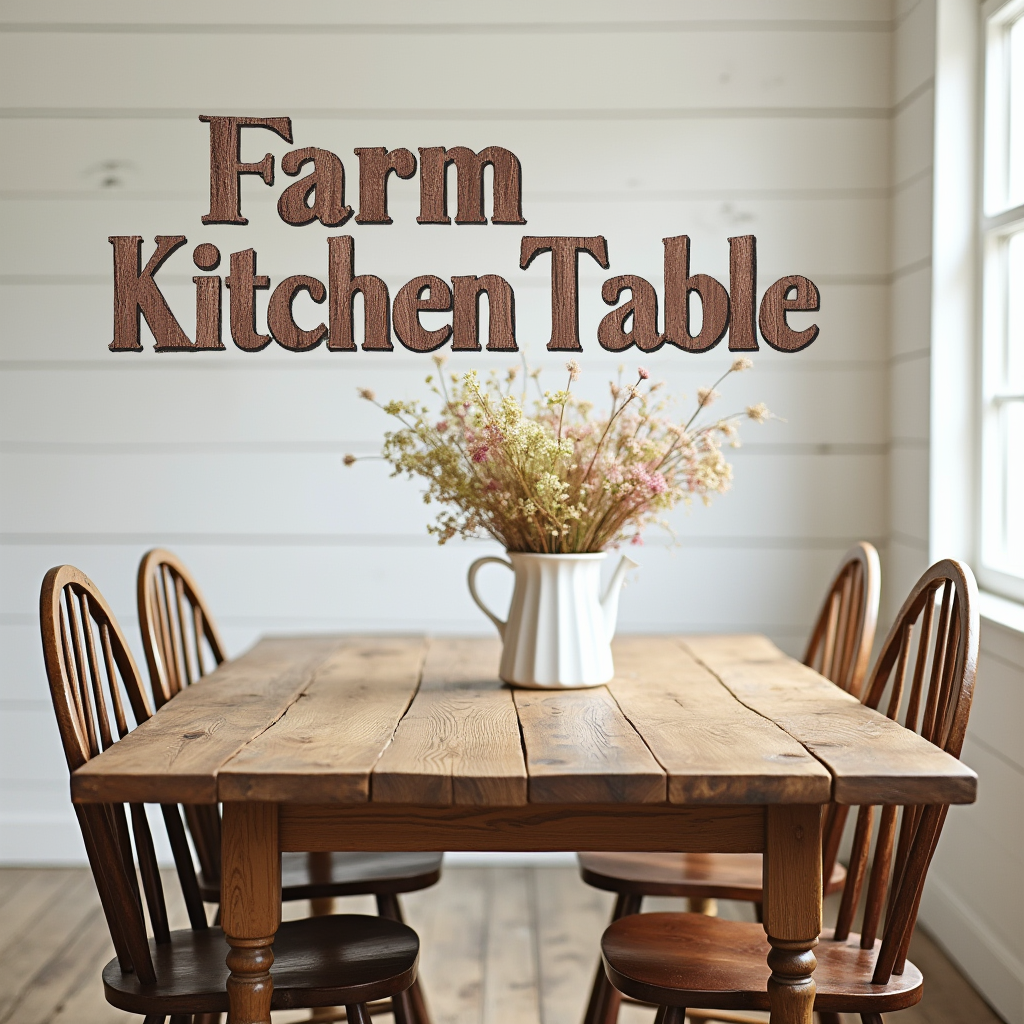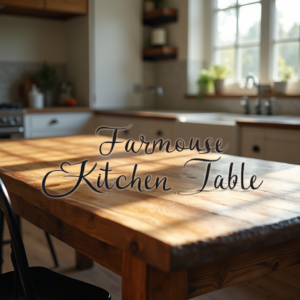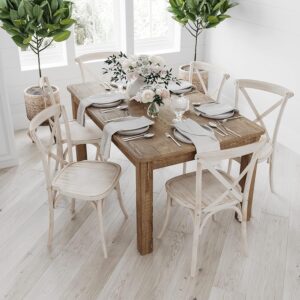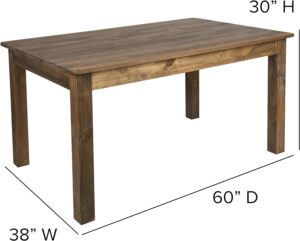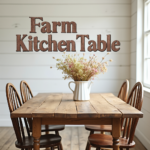What is a Farmhouse Kitchen Table?
 A farmhouse kitchen table represents more than furniture—it’s the centerpiece of rustic home design. These tables combine functionality with timeless aesthetic appeal, creating a warm gathering space for families.
A farmhouse kitchen table represents more than furniture—it’s the centerpiece of rustic home design. These tables combine functionality with timeless aesthetic appeal, creating a warm gathering space for families.
Key Characteristics of Farmhouse Kitchen Tables
- Solid wood construction
- Distressed or weathered finish
- Versatile design
- Neutral color palette
Top Design Features of Farmhouse Kitchen Tables
Material Quality
Farmhouse kitchen tables typically feature:
- Reclaimed wood options
- Durable hardwoods like oak and maple
- Robust construction for daily use
Style Variations
- Rectangular designs
- Round table options
- Extendable models
- Bench-style seating combinations
Sizing and Space Planning for Your Farmhouse Kitchen Table
Measurement Guidelines
- Standard table width: 36-42 inches
- Dining space recommendation: 36 inches between table and walls
- Accommodate 4-6 people comfortably
Budget Considerations for Farmhouse Kitchen Tables
Price Ranges
- Budget-friendly: $300-$600
- Mid-range: $600-$1,200
- Premium: $1,200-$3,000
Styling Your Farmhouse Kitchen Table
Complementary Decor Tips
- Pair with Windsor-style chairs
- Use neutral table runners
- Add metal accent pieces
- Incorporate natural centerpieces
Maintenance and Care
Preservation Techniques
- Regular wood conditioning
- Use protective coasters
- Clean with soft, damp cloth
- Avoid harsh chemical cleaners
The Cultural Heritage of Farmhouse Kitchen Tables
Farmhouse kitchen tables are more than just furniture—they’re living artifacts of American domestic history. Originating in rural agricultural communities during the late 18th and early 19th centuries, these tables emerged as functional centerpieces of family life.
Historical Evolution
In early American farmhouses, the kitchen table served multiple purposes beyond dining. It was a workspace for food preparation, a gathering spot for family discussions, and often the primary work surface for various household tasks. Craftsmen would construct these tables using locally available wood, typically pine, oak, or maple, ensuring durability and practicality.
Design Influences
The farmhouse table’s design reflects the pragmatic spirit of early settlers. Large, sturdy surfaces accommodated extended families and farmworkers, while simple construction methods emphasized functionality over ornate decoration. Turned legs, robust wooden planks, and minimal embellishments characterized these early designs.
Cultural Symbolism
More than a piece of furniture, the farmhouse kitchen table represented:
- Family unity
- Hard work and resilience
- Communal gathering spaces
- Generational storytelling
- Economic resourcefulness
Modern Interpretation
Today’s farmhouse kitchen tables maintain these historical design principles while incorporating contemporary aesthetic sensibilities. Designers now blend traditional craftsmanship with modern manufacturing techniques, creating pieces that honor historical roots while meeting current interior design trends.
Regional Variations
Different regions developed unique farmhouse table styles:
- New England: Lighter woods, more refined designs
- Midwestern: Robust, heavy-duty constructions
- Southern: Often featuring wider surfaces for communal meals
This rich heritage transforms the farmhouse kitchen table from a mere furniture piece into a narrative of American domestic life, connecting past traditions with present-day home design.
Conclusion
A well-chosen farmhouse kitchen table transforms your space, offering style, functionality, and a cherished gathering spot for family memories.
